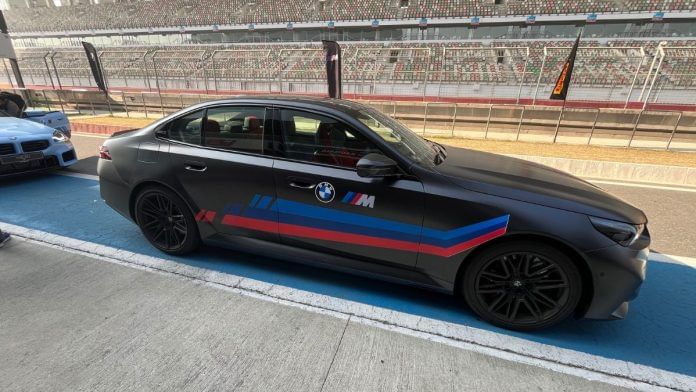This past week, Hyundai Motor Company president and CEO Jose Munoz visited Mumbai for the company’s first-ever ‘Investor Day’. Ostensibly, it was to speak with investors in Hyundai Motor India, which went public last year.
One of the things he announced on stage was the planned product launches by HMI for the next four years, which includes eight new strong hybrid vehicles, a first for the Korean company.
I have written about hybrids in the past and spoken about their different types. In a strong hybrid, the battery can also power the wheels. On the other hand, in a mild hybrid, the battery does not directly power the wheels but can provide power when the car is stopped, and give a small boost during acceleration.
Automakers betting big
Hybrids are a controversial subject in the automotive industry. Some automakers like Mahindra & Mahindra and Tata Motors, which have bet heavily on battery electric vehicles (BEV), have spoken out strongly against them. Whereas Maruti-Suzuki, Toyota, and Honda have hybrid vehicles in their line-up, with Toyota dominating the sales. In the last financial year, BEVs outsold hybrids by a small margin — 1,15,716 units to 1,04,800.
While fuel-mix breakups for the first half of the current fiscal year are yet to be made available, sales of hybrid vehicles have been climbing, aided by incentives in certain states like Uttar Pradesh, although these lapsed recently. A recent study by Grant Thornton Bharat indicated that 38 per cent of potential Indian car buyers would prefer a hybrid vehicle, while only 21 per cent would like to bring home a BEV.
And it isn’t just Hyundai that has planned to launch new hybrids. Maruti Suzuki just launched the new Victoris that comes with a strong hybrid option, and a hybrid version of the Fronx is on the anvil. With the TDSG plant in Gujarat’s Hansalpur manufacturing batteries for hybrid vehicles, Maruti Suzuki, along with partner Toyota, is betting big on the technology. And in December, when Kia Motors launches the second-generation of the Seltos SUV, it is believed an hybrid option will be offered too.
The rush for hybrids seems to be because of consumer preference. Despite the rising sales of BEVs, there is a seeming lack of confidence in the charging and electrical infrastructure in the country. While I could argue in favour of EVs here — especially when most consumers commute within urban areas and given the fact that the range of EVs has been improving — some consumers clearly think differently.
And there is another reason — CAFE 3. No, it’s not a new fancy coffee chain, but Corporate Average Fuel Efficiency norms for automakers. These are not new, the first CAFE norms were introduced in 2017 and the second in 2022-23.
Also read: China has left Germany behind in in automotive sector
What are CAFE norms?
Unlike emission norms like the currently applicable Bharat Stage – VI (BS6), CAFE norms do not apply to individual vehicles. They set a limit on automakers’ sales-weighted average fleet carbon dioxide emissions, prompting them to produce more fuel-efficient cars. The upcoming CAFE 3 norms do give certain benefits to smaller, lighter vehicles, unlike the linear methodology used previously.
Essentially, CAFE norms do not preclude a manufacturer from selling powerful cars with thirsty engines and thus higher carbon emissions. But in order to do so, they will have to sell a larger number of extremely fuel-efficient vehicles. However, there is a catch. Hybrids and electric vehicles have a multiplier effect — a hybrid vehicle is counted as two cars, an electric as three. So, when the average is calculated with these multipliers applied, it can come down significantly.
Let me give an example. BMW India recently launched the new Mini Countryman John Cooper Works, which has a powerful 300-horsepower engine — and I had a lot of fun driving it at the Buddh International Circuit. The carmaker hopes to sell a couple of hundred units of this powerful machine.
But BMW India is also leading the luxury electric vehicle sales, having received over 1,500 bookings of the iX1 SUV in the first quarter of 2025. Simply put, BMW India will be able to offer more very powerful petrol-guzzling machines because they sell a lot of electric cars. The automaker also has a few hybrids among its popular models, which strangely enough also includes the ridiculously powerful M5 super sedan.
Similarly, Mahindra & Mahindra would like to sell several of their electric XEV 9e and BE 6 SUVs to offset the sales of its popular Bolero, Scorpio, and Thar diesel SUVs. Sure, it’s a simplistic explanation of the norms, but I hope that it explains one reason why carmakers are rushing to launch hybrids and BEVs.
As an automotive reviewer and member of the Indian Car Of The Year (ICOTY) jury for the year, I am agnostic when it comes to technologies. For me, a car has to be fun and engaging to drive while also making sense for a large number of Indian buyers.
That said, I do find the argument about hybrid vehicles being “yesterday’s technology” to be a bit facile. The fact is that in 2026, Formula 1, the pinnacle of motorsport, is releasing new norms that will include the introduction of hybrid power units. Ergo, hybrid technology is also evolving rapidly.
Kushan Mitra is an automotive journalist based in New Delhi. He tweets @kushanmitra. Views are personal.
(Edited by Aamaan Alam Khan)






